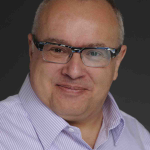Aims:
To update on new epidemiological evidence regarding the roles of alcohol consumption as a risk factor.
Design:
Statistical analyses based on systematic review of literature on:
Causality between alcohol consumption and disease outcomes
Alcohol exposure in different countries
Meta-analyses on risk relations which have been found causal
Alcohol attributable fractions are determined by solving the usual integral for population attributable fractions (PAF) of the type
where RR(x) = the relative risk of alcohol consumption (current drinkers).
compared to lifetime abstainers
P(x) = the prevalence of alcohol consumption; distribution of exposure
P'(x) = the prevalence of alcohol consumption under counterfactual scenario
m = highest consumption
but including the elevated risk for former drinkers and the mediation of the above risk of volume of drinking by heavy drinking occasions.
Measurements:
Causality is determined using the usual epidemiological criteria with special emphasis on biological pathways. Alcohol exposure is derived separately by country from per capita consumption data based on production and sales plus unrecorded consumption, triangulated with results from surveys. Relative risk is determined by a series of meta-analyses.
Findings:
Alcohol was found to be related to more than 100 ICD categories. The majority of the effects of alcohol on burden of disease are detrimental. Major results are summarized in Table 1.
Table 1: Global burden of disease (DALYs in 1,000’s) attributable to alcohol consumption by major disease categories in the world 2002 (Rehm et al. 2008)
…
This Table does not yet include the impact of alcohol on tuberculosis and other infectious disease.
Conclusions:
The burden of disease associated with alcohol consumption is large. Suitable interventions are needed.
